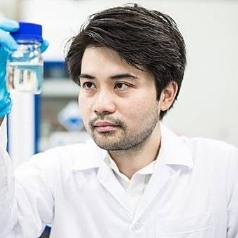Recent Developments in Bio-Based Hydrogels
A special issue of Gels (ISSN 2310-2861). This special issue belongs to the section "Gel Processing and Engineering".
Deadline for manuscript submissions: closed (30 June 2023) | Viewed by 1754
Special Issue Editor
Special Issue Information
Dear Colleagues,
Due to increasing environmental concerns, natural and renewable materials have attracted more attention because of their biodegradability, biocompatibility, renewability, non-toxicity, and environmental sustainability. Bio-based hydrogels have been successfully prepared from cellulose, chitin, chitosan, alginate, starch, and gelatin and have been of great interest in various applications, such as medical, pharmaceutical, agricultural, sensor, food, cosmetic, and waste treatment.
This Special Issue aims to present recent developments and future perspectives in the preparation, modification, characterization, and application of bio-based hydrogels. Both original research articles, rapid communications, and reviews of bio-based hydrogels prepared from cellulose, chitin, chitosan, alginate, starch, and gelatin are welcome. Other bio-based and nanocomposite hydrogels are also welcome.
Dr. Supachok Tanpichai
Guest Editor
Manuscript Submission Information
Manuscripts should be submitted online at www.mdpi.com by registering and logging in to this website. Once you are registered, click here to go to the submission form. Manuscripts can be submitted until the deadline. All submissions that pass pre-check are peer-reviewed. Accepted papers will be published continuously in the journal (as soon as accepted) and will be listed together on the special issue website. Research articles, review articles as well as short communications are invited. For planned papers, a title and short abstract (about 100 words) can be sent to the Editorial Office for announcement on this website.
Submitted manuscripts should not have been published previously, nor be under consideration for publication elsewhere (except conference proceedings papers). All manuscripts are thoroughly refereed through a single-blind peer-review process. A guide for authors and other relevant information for submission of manuscripts is available on the Instructions for Authors page. Gels is an international peer-reviewed open access monthly journal published by MDPI.
Please visit the Instructions for Authors page before submitting a manuscript. The Article Processing Charge (APC) for publication in this open access journal is 2600 CHF (Swiss Francs). Submitted papers should be well formatted and use good English. Authors may use MDPI's English editing service prior to publication or during author revisions.
Keywords
- biopolymers
- nanocomposites
- hydrogels
- applications






